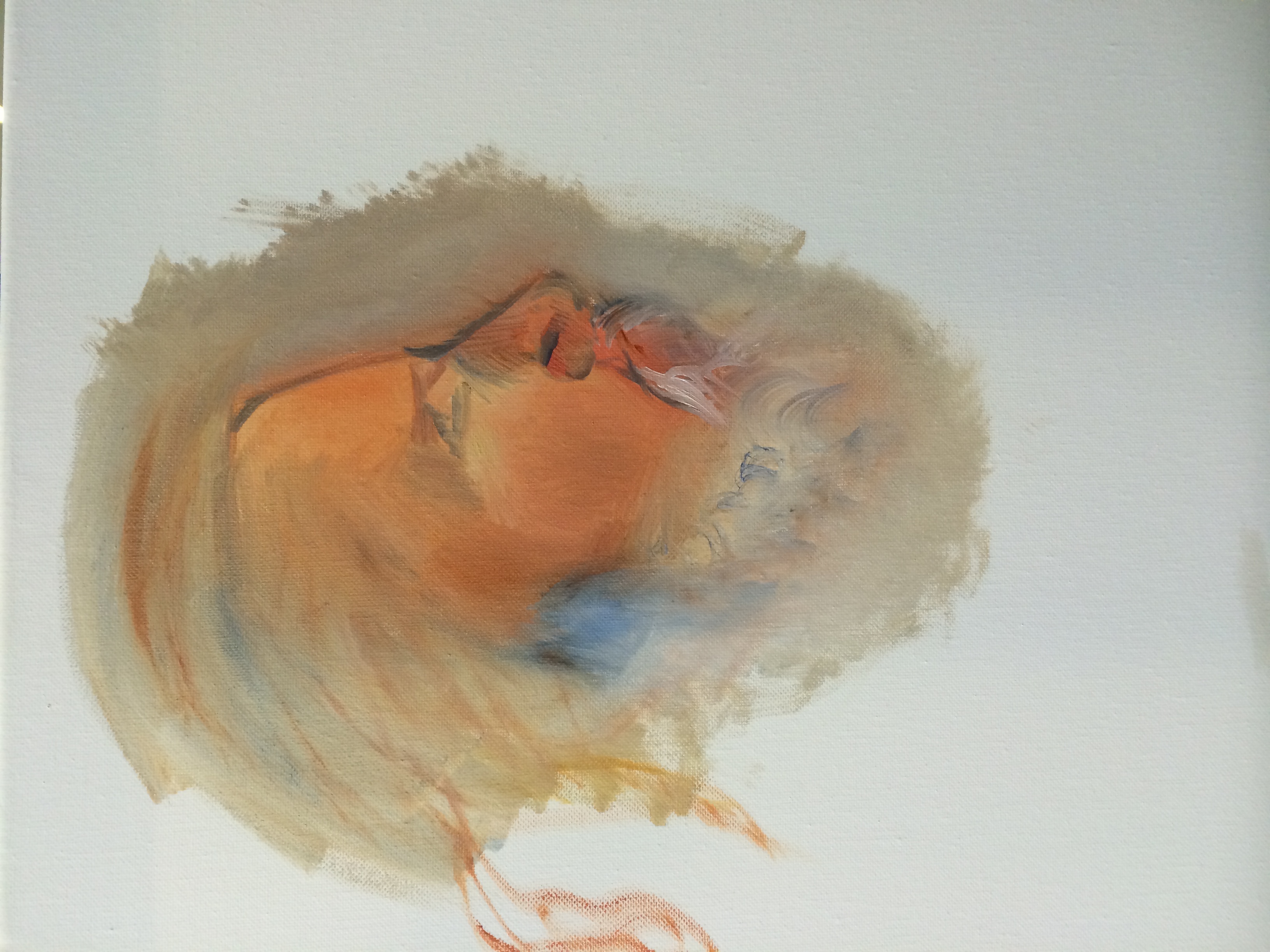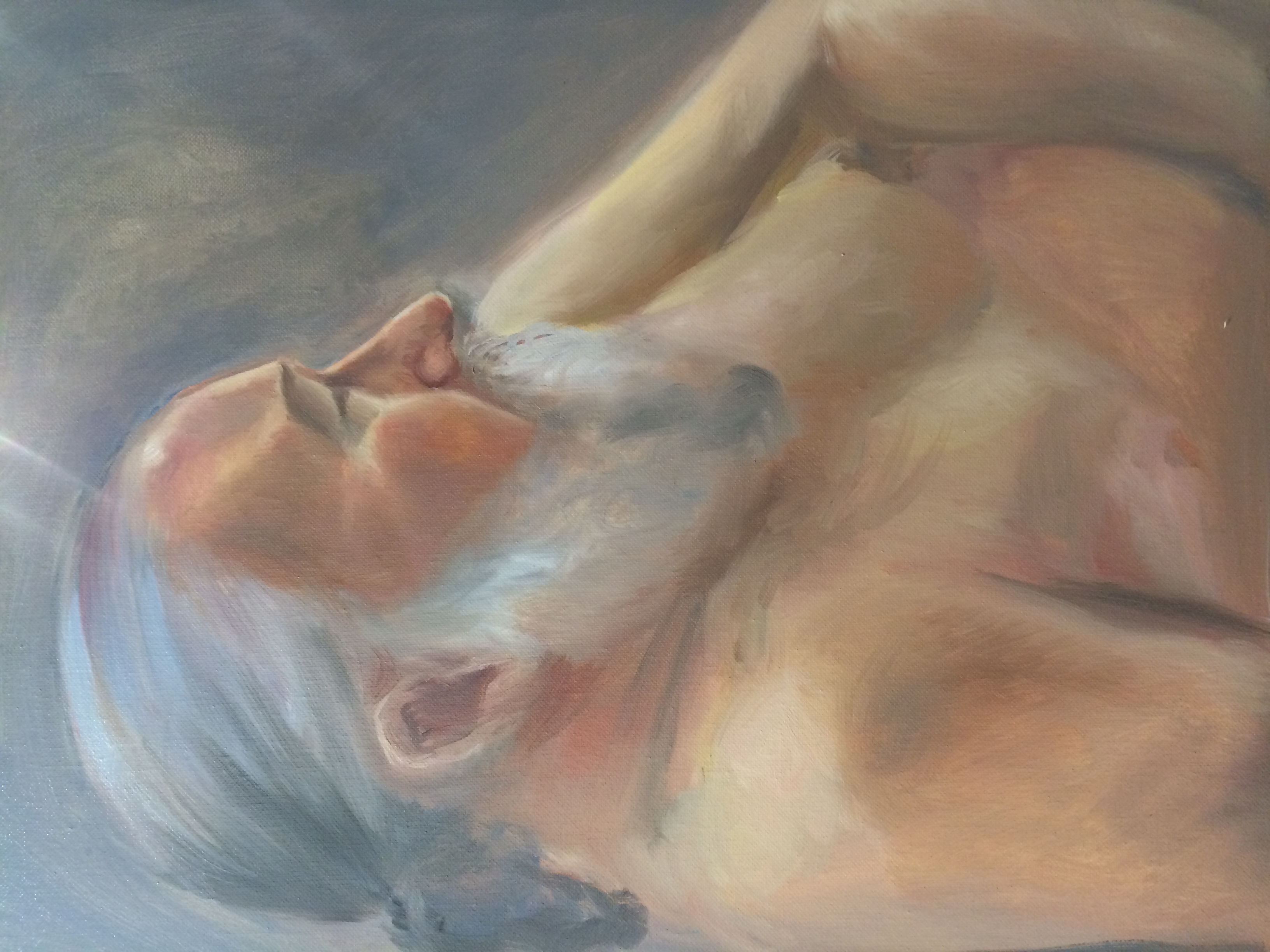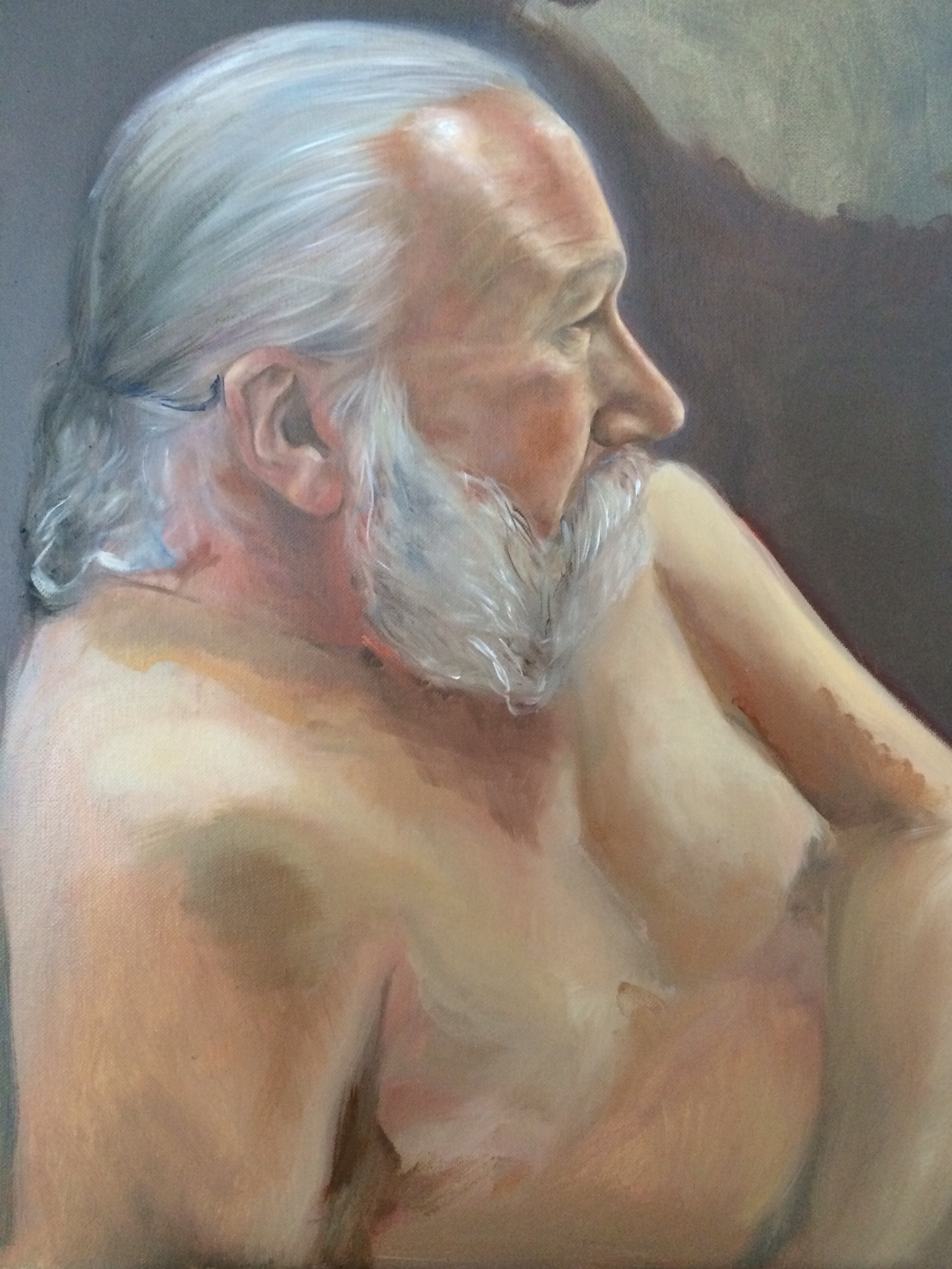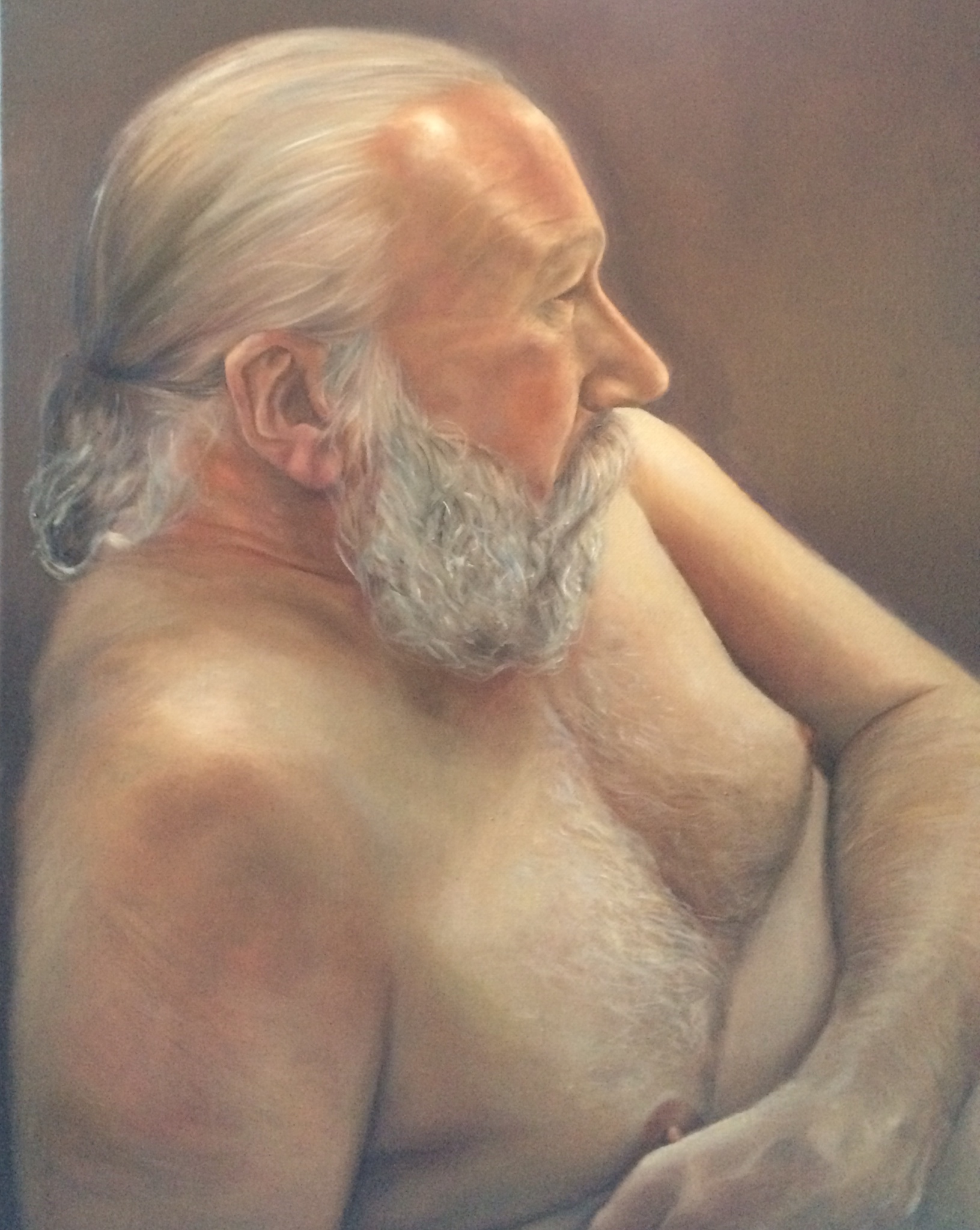I have just completed a short course at Charles H. Cecil Studios in Florence (Sept 2015). The teaching in Florence is based on a tradition called 'sight-size' where the drawing or painting is seen to the scale of life alongside the model. Alongside this set up, we were rigorously using optical devices - a small mirror, or a black mirror, in order to judge and capture edges accurately. It is thought that artists had started using mirrors as early as the 1500s. Our eyes constantly trick us, so we have to consciously train ourselves to dilute that subjectivity.
The sight-size method also requires you to stand back from your model, as your canvas is placed directly next to the model, and your painting becomes that image which you are observing from a distance. This technique therefore requires good visual memory too, as you are constantly moving back and forth, from observing, to making the marks on your canvas, to then going back and observing them again. The benefit in standing back lies in flattening the 3D image that you are trying to translate, and seeing the form more objectively, as opposed to getting caught up in detail and irrelevancy.
Another drastic change was being limited to only four colours: an earth red, yellow ochre, ivory black, and lead white. I soon concurred that that the simplicity we were subjected to is seductive, and there is a lot to be said for using an earth-based palette. Though with all the tempting modern colours that have been created since, I can't imagine sticking within its parameters in the future of my painting, and would probably only use the limited palette as a starting point.
Under the instruction of Nicholas Beer, my painting took leaps. However, it one cannot deny a great degree of brainwashing that occurs in Florence too. This is not just a way of portrait painting - this is the way. We are led to believe that this is the creme de la creme, and maybe it is, after all, I greatly admire some of the painters of the Baroque movement for capturing the sitter's psychology, but God forbid, should a Cadmium colour be seen on my palette, far too modern for this place. "Phalo blue - what is that? Alizarin Crimson - a shocking colour." If you don't keep yourself under control, you are frowned upon.
Here is an excerpt from my end of course report:
Her palette became an independent object of wonder; those who encountered it without prior warning
were often vociferous in their reaction. Sun-glasses should have been provided.

















